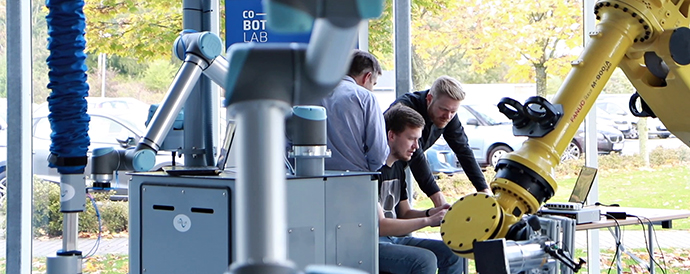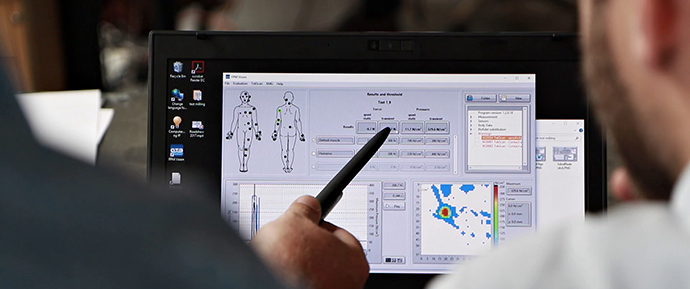Cobot Lift gains control over safety: "Collaborative robots must be implemented safely in industry"
COVR has helped Cobot Lift to understand and comply with safety requirements in the development of its vacuum lifter.
In the European robot safety project COVR, which the Danish Technological Institute (DTI) coordinates, the Danish start-up company Cobot Lift received help to find out what requirements the company's robotic lifter must meet in order to call it safe. This work took place in DTI's newly inaugurated Cobot Lab.
Cobot Lift has developed a solution that combines a Universal Robot with a vacuum lifter, allowing the robot to lift three times as much as it normally can.
- Collaborative robots can typically lift up to 10-15 kg. But because we are now moving in an area that is much bigger, the problem is also getting bigger. Therefore, it is even more important to us that we have good control over what really happens if you get hit by our product, says Flemming Bischoff Truelsen, CEO of Cobot Lift.

Consider safety from the start
Mads Mathiesen, who is a Business Manager at the Danish Technological Institute, says that safety with collaborative robots is very different from the usual safety measures, where the robots are fenced. Therefore, it is important to think about safety from the start.
- Collaborative robots are distinguished by working in an open environment without fences, and therefore come into close contact with humans. And that requires a different way of thinking about robot safety than people have been used to in traditional industrial robotics, he says.
- The advantage of thinking about robot safety from the outset is that you combine your specifications for functional requirements and safety requirements into a single requirements specification, which makes your design safe in the end, adds Mads Mathiesen.

ISO... what did you say?
COVR clarified what safety requirements Cobot Lift must meet, so that their robotic solution stays within the limits set in ISO / TS 15066 - a technical specification that describes human pain thresholds when colliding with a collaborative robot.
- Specifically, we helped Cobot Lift map the connection between speeds, payloads and collision forces so that they can help their system integrators with recommendations on how to use their product best, says Mads Mathiesen.
CEO Flemming Bischoff Truelsen says that one of the things the company has worked with in COVR is objective measurements of what happens when a collision occurs.
- There is equipment here at DTI's Cobot Lab that we would not otherwise have been able to use. We have gained a much better knowledge of what it means to make these solutions. When we make a product that needs to be completely finished out to the corners, it is important that we comply with the right standards all the way through and get everything sorted. And we managed this with COVR, he elaborates.
Ultimately, COVR is about getting more robotic solutions implemented in the industry without compromising on human safety.
- By implementing more robotic technologies in Danish industry, we ensure the industry's competitiveness in a global market, Mads Mathiesen concludes.
Interested in learning more about robot safety? Go to COVR's website or reach out to Mads Mathiesen at mmat@teknologisk.dk
COVR - funded by the EU - is a collaboration between the Danish Technological Institute (DTI) in Denmark, the National Research Council (CNR) in Italy, Fraunhofer IFF in Germany, the Alternative Energies and Atomic Energy Commission (CEA) in France and Roessingh Research and Development in the Netherlands.